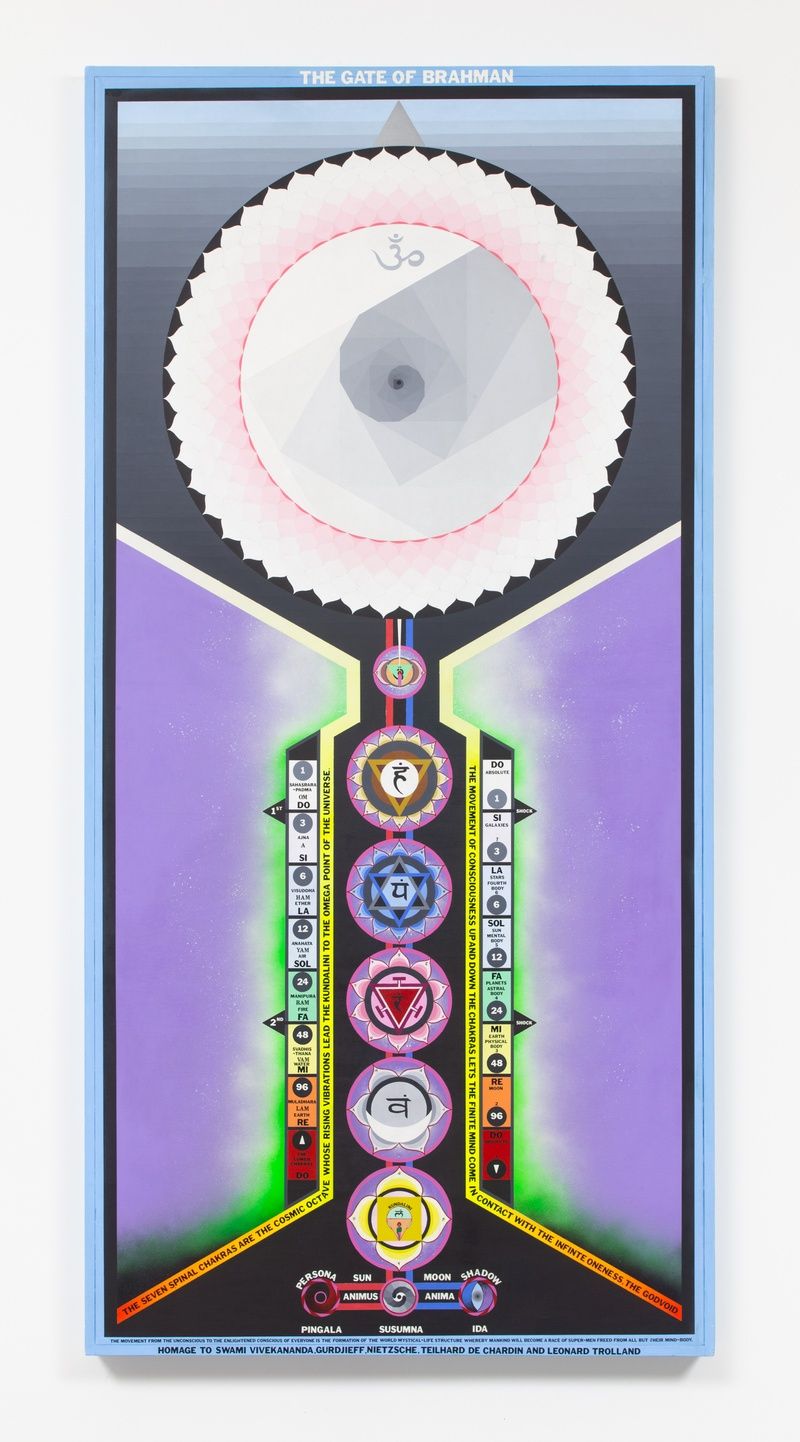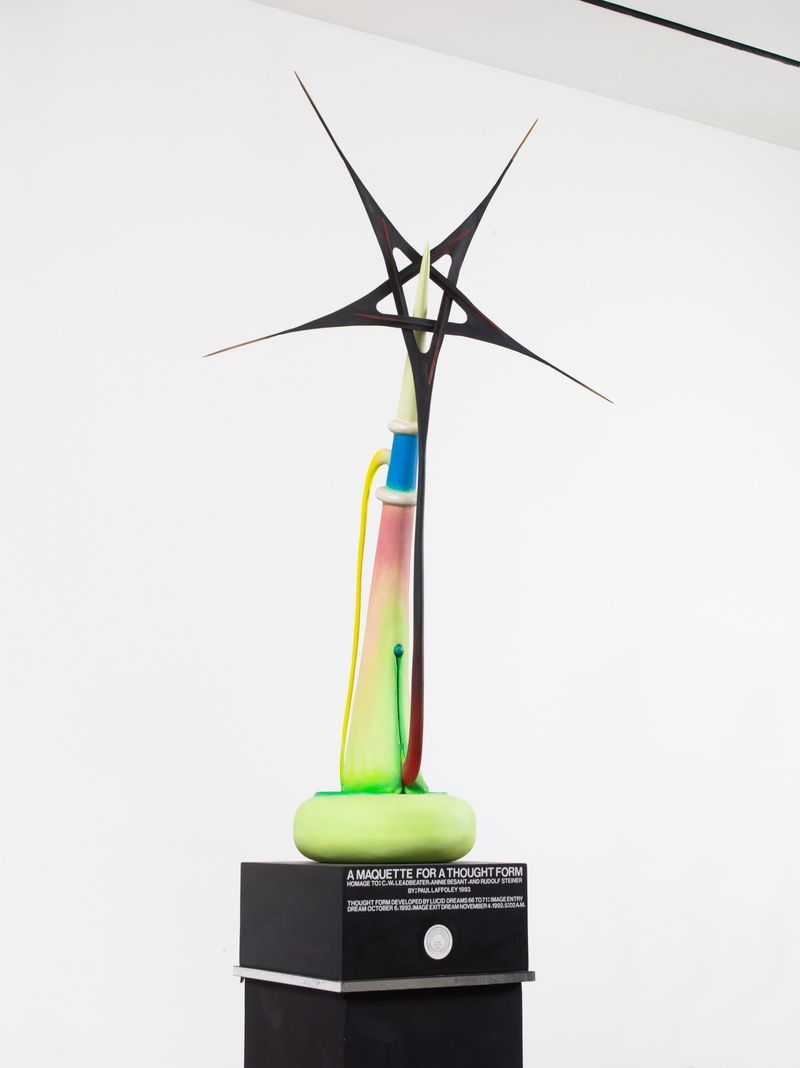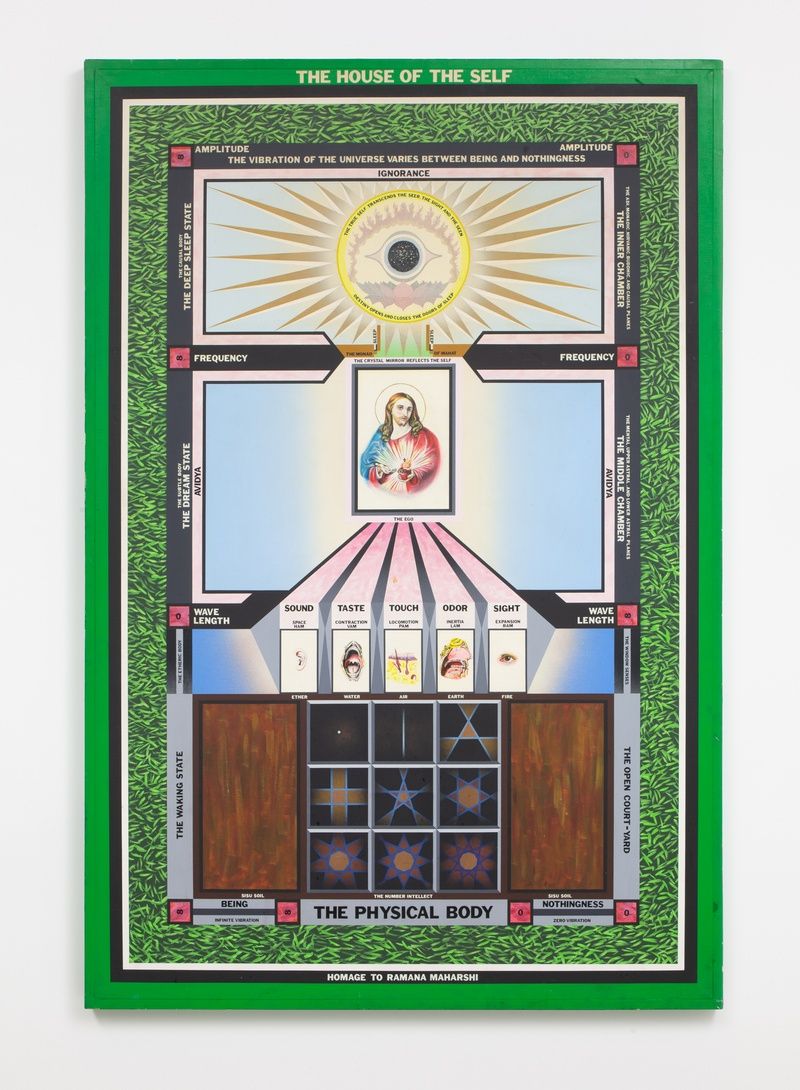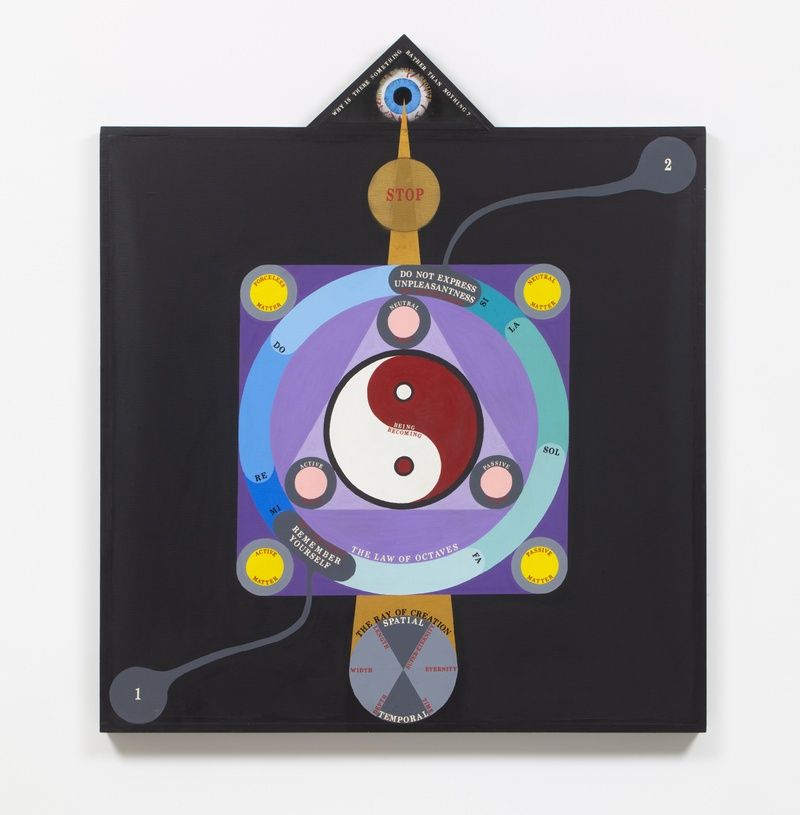James Fuentes Gallery
Paul Laffoley
Thoughtforms
The work of Paul Laffoley (1935-2015) presents a dense and brilliant visual architecture. Laffoley was informed by decades of deep study and personal practice, beginning age seven, across the realms of yoga, architecture, science, mathematics, Vedic astrology, philosophy, psychology, mysticism, religion, and the occult. His work illustrates systems and structures that seek to describe the mysteries of the universe—including theories on the origins of humankind, consciousness, time travel, relativity, dimensionality, psychotronics, cosmic cycles, and the emergence of meaningfulness as well as “extreme meaninglessness.” Sometimes taking up to three years to complete, Laffoley conceived of each work as a “structured singularity.”
Thoughtforms follows the recent reprinting of the 1905 publication Thought Forms by Annie Besant and Charles W. Leadbeater. The publication was a major influence on abstractionists including Wassily Kandinsky, Igor Stravinsky, Hilma af Klint, Agnes Pelton, W.B. Yeats, and Piet Mondrian, who have recently undergone revelatory reassessments in light of their Theosophical engagements. The task that these artists set forth for themselves was to communicate an inner vision with as much exactness as possible, giving form to feelings, thoughts, and inner life. As a follower himself, Laffoley was reclusive and obsessive. When asked, “How do you feel about being an outsider artist?” he replied, “I can’t be an outsider because I never go outside!” Within Laffoley’s own practice, the term he frequently sought to define was “Visionary Art,” and he spoke of ideas beyond his understanding that were finding their way through the channels of his consciousness.
The works in this exhibition span a 50-year period, beginning with True Liberation (1963), which was last shown in The Alternative Guide To The Universe at the Hayward Gallery, London in 2013. Gradually, Laffoley’s ideas would coalesce into trans-disciplinary schematic compositions with generous notations that paid homage to the theorists he extrapolated from. Laffoley did not work in series and rarely made preparatory sketches or studies. The compositions were directly and meticulously worked out on the canvas, followed by the application of vinyl text composed by the artist. Through his practices of Tantric meditation and lucid dreaming, he would receive the details for his works “envisioned as completely done,” almost as if “someone else had done them.” In his words: “I can afford to take time with the craftsmanship because I am only rendering a painting which is complete in my mind.”
Paul Laffoley was born and raised in Boston, MA. Following his studies in the classics and art history at Brown University, he decided to become a fine artist. At this point, he had enjoyed working schematically and rationalized that the study of architecture would be helpful to organizing his future paintings. After his first year in Harvard’s architecture program, he was “grand juried out” due to his “conceptual deviations.” He subsequently discovered Frederick Kiesler and traveled to New York in order to apprentice with him. The death of his father caused Laffoley to abandon this sojourn in New York, but the impact of his time there would catalyze the transformation of his oeuvre as well as the creation of The Boston Visionary Cell in 1971.
Laffoley’s first museum retrospective was presented by the Austin Museum of Art in 1999, followed by in-depth presentations on his work at the Palais de Tokyo, Paris (2009); Hamburger Bahnhof, Berlin (2012); Hayward Gallery, London (2013); Henry Art Gallery, Seattle (2013); and the Yerba Buena Center for the Arts, San Francisco (2013). Numerous publications detailing Laffoley’s work include The Phenomenology of Revelation (1989); Paul Laffoley: Architectonic Thought-Forms: 1967-1999 (1999); and most recently The Essential Paul Laffoley (2016), published by the University of Chicago Press.
Works

The Gate of Brahman: The Cosmic Octave, 1970
Signed, dated, and inscribed verso
Oil, acrylic, and hand applied vinyl letters on canvas
97 ½ × 47 ½ inches

A Maquette for a Thought Form, 1993
Acrylic on tulip and maple wood, balsa and bass wood
Overall: 111 ½ × 29 × 15 ½ inches

The House of the Self, 1971
Signed and dated verso
Oil, acrylic, ink, and vinyl press type on canvas and wood
73 7/8 × 49 ¼ inches

Why is There Something Rather Than Nothing?, 1964
Oil and hand applied vinyl type on canvas and wood
57 1/8 × 49 ½ inches